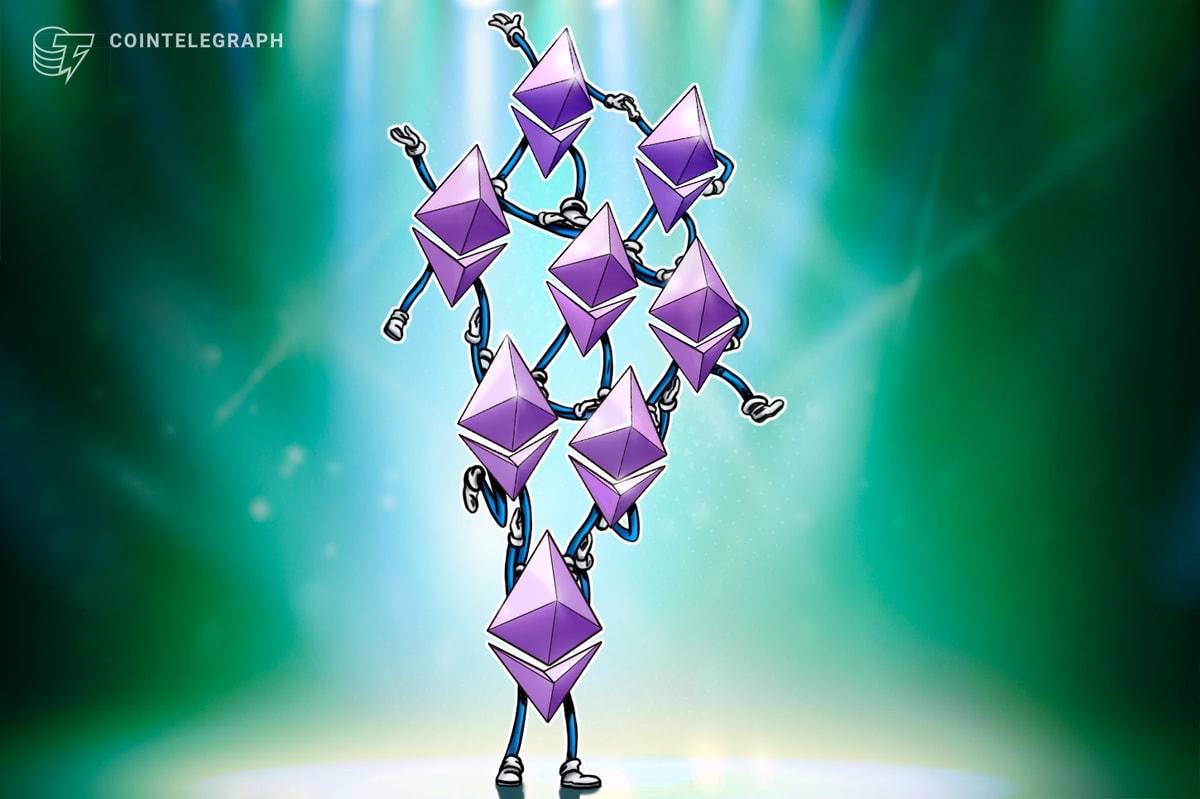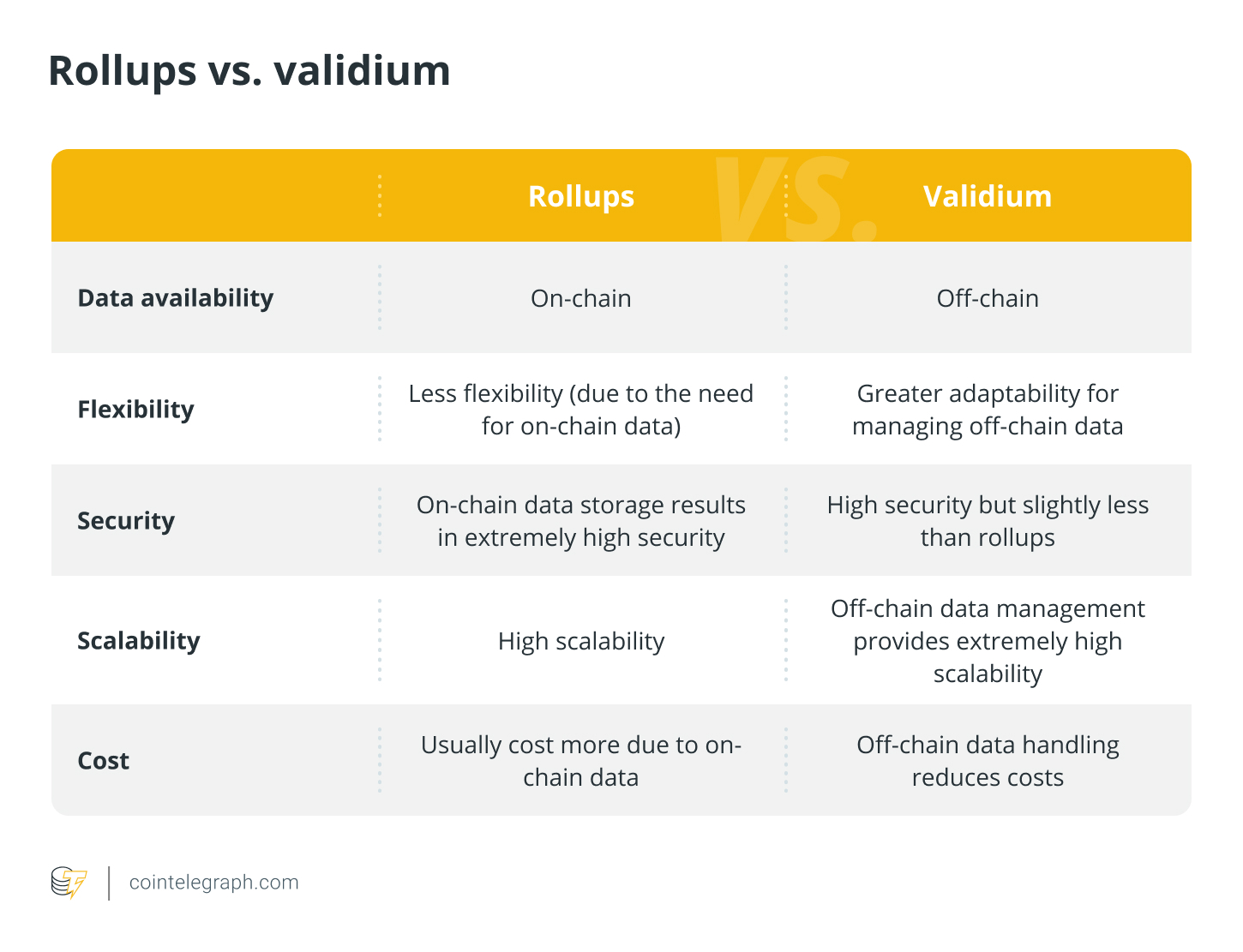
Validium
Validiums is a Layer 2 scaling solution designed to improve Ethereum performance by processing transactions off-chain.
Validiums are primarily responsible for reducing the load on the Ethereum blockchain by processing the majority of transactions off-chain and sending only brief proofs to the mainnet for verification. This approach to processing off-chain transactions significantly improves throughput and reduces congestion on the mainnet, resulting in a more efficient and cost-effective Ethereum experience.
With this approach, transaction security and integrity are maintained through frequent on-chain proofs of validity, even when most data is processed off-chain. By verifying the correctness of off-chain calculations, these proofs ensure that state transitions follow Ethereum guidelines.
Validiums provide significant scalability and transaction speed improvements by offloading transaction data from the mainnet. This is particularly useful for high-throughput systems and decentralized applications (DApps).
How Powers Work: A Step-by-Step Process
Validiums processes transactions off-chain, submitting proofs of validity to the Ethereum mainnet for verification.
Validiums work through a series of steps designed to improve transaction processing and improve scalability. These steps are as follows:
Step 1: Submit the transaction
Users initiate transactions by submitting them to the Validium operator, which is responsible for managing off-chain transaction processing.
Step 2: Assembly and off-chain processing
The operator collects multiple transactions and organizes them into batches. These payments are then processed off-chain. Compared to processing each transaction separately on the mainnet, this off-chain processing significantly improves transaction throughput.
Operators are essential to managing Validium channels. They are responsible for collecting transactions, batching them, and creating zero-knowledge proofs to validate these batches of transactions.
Step 3: Generate Proof
Zero-knowledge (ZK) proofs are required for the powers to work. The operator generates ZK proofs after processing the transaction. This cryptographic evidence demonstrates that the resulting state transitions follow Ethereum network regulations and that off-chain calculations were correctly implemented. Most importantly, ZK-proofs achieves this while protecting confidentiality – that is, not revealing any details – about the transactions themselves.
Step 4: Verification Proof
The generated ZK proofs are uploaded to the Ethereum mainnet along with state validation, an encrypted representation of the system’s latest off-chain state. The main network smart contract verifies the validity of the proofs. By verifying that off-chain accounts are valid and that the modified state complies with blockchain regulations, this verification procedure ensures the security and finality of transactions.
How permissions depend on Ethereum mainnet for security
Validiums are off-chain transaction processors, but they still rely on the Ethereum mainnet for security. Operator-created state commits and ZK proofs are sent back to the Ethereum mainnet. This introduction ensures the verifiability and security of off-chain operations.
Validiums leverages Ethereum’s strong security model by using cryptographic proofs to connect these off-chain operations to the mainnet. By combining the benefits of off-chain processing and mainnet security, this integration allows Validiums to achieve significant scalability while ensuring that the end state and integrity of transactions are protected by the Ethereum blockchain.
What is the difference between a will and a validium?
Although Validium and Volition are Layer 2 (L2) scaling solutions for Ethereum, their approach to data availability differs.
Volition offers users the flexibility to choose between off-chain and on-chain data availability for their transactions, providing improved security and resilience at a slightly higher cost. In contrast, Valdium stores data exclusively off-chain, prioritizing scalability and cost reduction, but with a slightly lower security trade-off compared to on-chain solutions.
The table below shows the differences between volition and validium:
Aggregated value versus permissions
Validium and rollups are L2 scaling solutions for Ethereum; However, security protocols and data access vary.
Blockchains provide enhanced security and simplified verification by processing transactions off-chain while storing data on-chain. Validium, on the other hand, optimizes for lower costs and greater scalability while maintaining a slightly lower level of security by keeping data off-chain. Cost, flexibility and security profiles are affected by this difference.
The table below shows the difference between the combined value and Validium:

Benefits of Validium
Validiums are an attractive solution for scaling the second layer of the Ethereum network and offer several notable benefits, including faster transactions, lower fees, and the potential for improved privacy.
One of the main advantages is its ability to speed up transaction processing. By processing transactions off-chain, powers ease the computational load on the Ethereum mainnet, leading to faster transaction times and improved network efficiency. This feature is particularly useful for decentralized applications and high-throughput platforms.
Additionally, Validium significantly reduces gas costs. Since most transaction and account data is processed off-chain, the costs associated with executing transactions are significantly reduced. This cost-effectiveness makes it a desirable option for users who frequently interact with the Ethereum network but are concerned about high transaction fees.
Additionally, permissions provide the ability to improve privacy. Since permissions manage data off-chain, transaction details do not need to be publicly disclosed on the Ethereum mainnet. Instead, they are verified using zero-knowledge proofs, which validate transactions without revealing sensitive information. This enhanced privacy is essential for users and businesses that prioritize privacy in their interactions with blockchain.
Challenges Facing Validium Systems
Potential downsides of the powers include concerns about data availability and centralization risks associated with the operator role.
An important concern is data availability. Because permissions store transaction data off-chain, there is a risk that this data could be lost or inaccessible in the event of an outage or compromise of the off-chain storage solution. This can hinder the ability to verify transactions and maintain the integrity of blockchain history.
Another potential disadvantage is the centralization risks associated with the operator. In the Validium system, operators play a crucial role in collecting transactions, creating zero-knowledge proofs, and submitting state bonds to the Ethereum mainnet. This central role can create a single point of failure if operators act maliciously or fail to perform their duties properly, potentially compromising the system. Relying on a limited number of operators also leads to a concentration of power and trust in the hands of a few entities, which can undermine the decentralized spirit of blockchain technology.
These challenges highlight the importance of implementing robust security measures and risk mitigation strategies for Validium systems to ensure they successfully balance scalability and security while maintaining decentralization and trust .